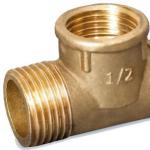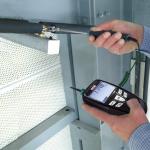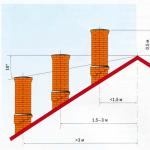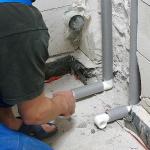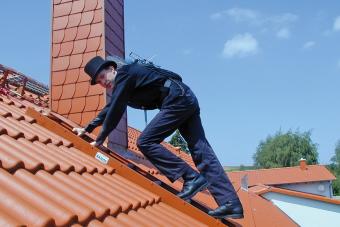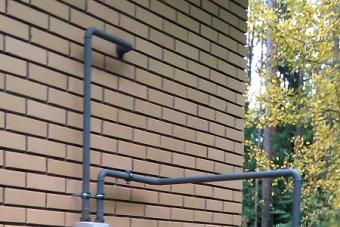When using any solid fuel, products of incomplete combustion accumulate in the chimney, which settle on the walls in the form of a soft coating. If you do not clean it in time, the clearance will decrease, which will significantly worsen traction. And so much so that the smoke goes into the room. In the worst case, the soot can catch fire, which is fraught with the destruction of the pipe or even a fire. Cleaning the chimney is practically the only way to avoid this. It is necessary to inspect the condition of the pipe twice a year - before and after the heating season. And how often you have to clean it depends on whether you use preventive chimney cleaning methods or not.
This is the result of a soot fire.
There are two types of chimney cleaning type:
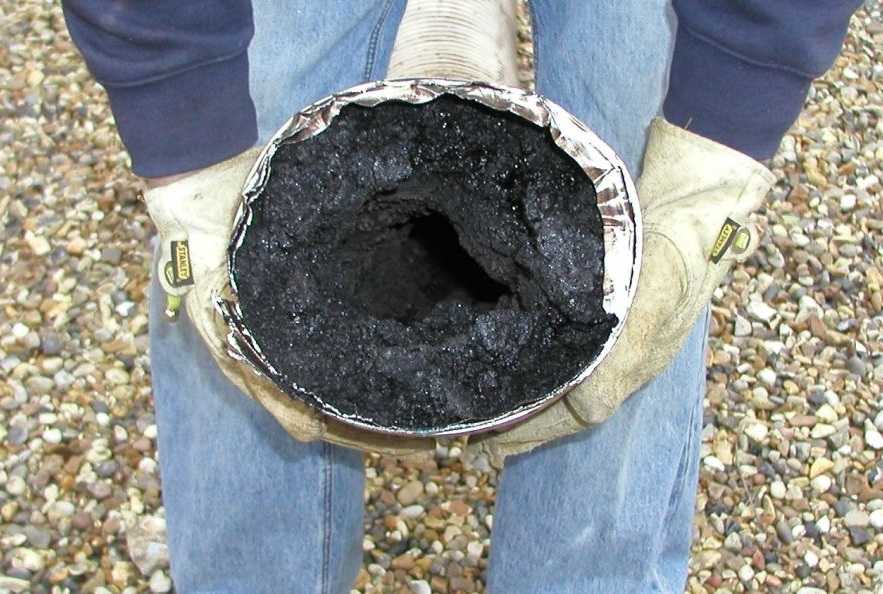
Chimney sweeps have been cleaning soot in this way for centuries. Cleaning is carried out from the roof. A special projectile is lowered into the pipe - a core, to the center of which a flexible cable is welded / attached. Above the core there is a brush that crushes soot, and the core is a weighting element that simultaneously checks the patency of the pipe. When working, you need to be careful: if the traction is good, knocked down soot and other debris will fly into your face. Therefore, first put on goggles and a respirator, and also tie yourself to a pipe: with a sudden release in the face, a person involuntarily makes a sharp movement. How it can end on the roof, you can probably imagine.
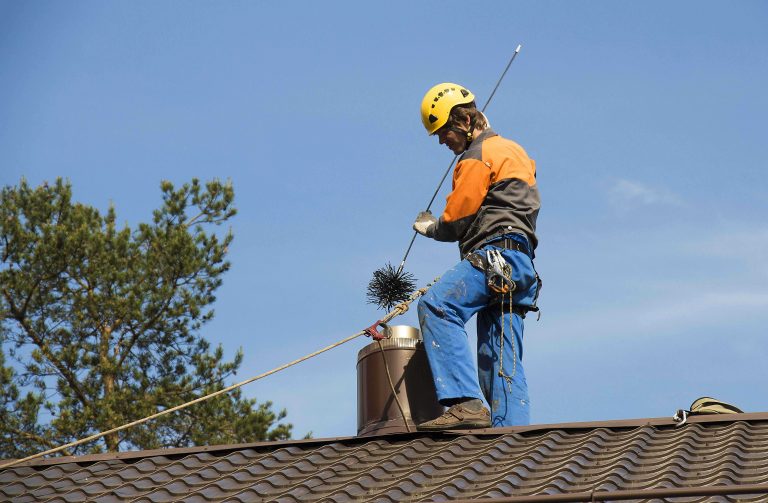
This design - a ruff with a core on a cable - can be done independently, but the main snag is in the right load. It should be round and centered. No ordinary weights, heavy pieces of iron are suitable. They work for the time being, and then the tied load becomes “unstoppable” in the pipe and no effort can get it out of there. Often, in order to extract the projectile, disassembly of a fragment of the chimney is required. If you are going to clean the chimney yourself, either make or buy the “right projectile” that under no circumstances will get stuck in the chimney. Taping a brush, making it from metal or synthetic bristles - these are already details that usually do not cause difficulties.
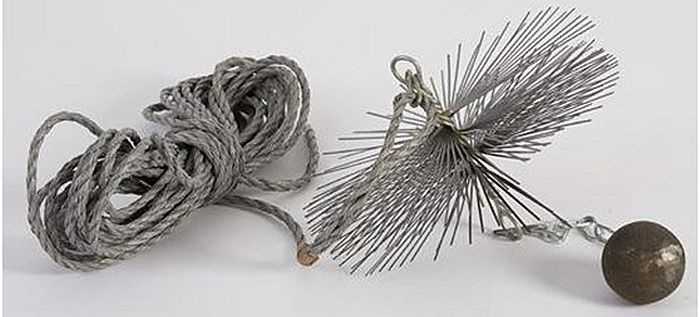
Sometimes the pipe is too high to be reached even from the roof. In this case, the chimney is cleaned from below. If the chimney is metal and there is a cleaning glass, it is unscrewed and a ruff on a flexible rod is filled into the pipe. In some cases, not rods are used, but rigid wire. If there is no glass, maybe there is a cleaning hole, if there is none, then you will either have to disassemble the beginning of the chimney, or clean it through the firebox, which is completely inconvenient.
There is one more thing: if the pipe is metal, brushing is not enough - a large amount of plaque remains on the walls. In order for the cleaning to be of high quality, instead of a brush, a lump of rags is wound onto a wire or rod. Such cleaning of the chimney leaves behind almost perfectly clean walls.
Homemade chimney brush
One option is to make a cleaning brush out of polypropylene pipes. Pipes are cut into fragments of approximately 1.5 meters. Threaded fittings are installed on the ends. A metal brush for a grinder is attached to one of them.
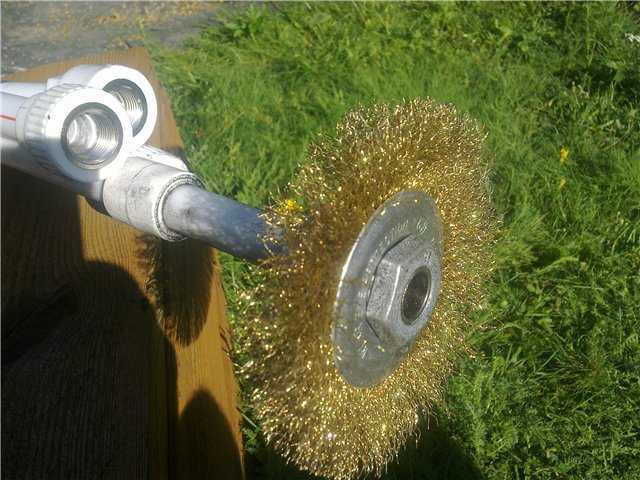
Previously, the wire on the brush is fluffed with pliers or pliers. It turns out a home-made cleaning telescopic rod for the chimney.
How to make a chimney cleaner from a plastic bottle, see the video.
How to clean a very high or curved chimney
Sometimes the pipe rises very high above the ridge. Not to call a special vehicle with a lifting platform every time to clean the chimney? The issue is resolved with the help of a very long cable, in the middle of which a brush of a suitable diameter is attached.
A small load is tied to the end of the cable, thrown into the pipe, pulled out from the other end. The cable remains inside, and its second end hangs outside. When it becomes necessary to shake the soot, they simply pull one end, then the other, moving the brush tied to the cable. The total length of the cable is three pipe heights.
The problem of a pipe with a bend is solved in the same way - you only have to somehow drag the cable through the knee for the first time, and then you only need to pull the ends of the cable.
Soot cleaning chemicals
Any chemical means are only preventive measures and a way to make mechanical cleaning more rare. You can cope without mechanical removal of plaque only if you have a stainless steel or ceramic chimney, and then, with the regular use of one or more products from this category.
Keep in mind that if you haven't cleaned your chimney for a long time, and you start using one of the chemicals, there is a chance that you will completely "plug" the draft. These substances do not remove or dissolve deposits, but only soften them. Softened soot and soot either fly away in the form of flakes into the pipe, or fall down. If the stove is reversible, with long curved smoke channels, soot can clog the gap. It will be necessary to open the cleaning windows, remove the soot and everything that has fallen in there. If the pipe is straight, after using these products, it is necessary to clean the firebox - within a few days, the fallen sediment will pour into it.
Folk chemicals
Let's start with "folk" means for dissolving soot. Even our grandmothers periodically sprinkled a certain amount of salt on burning firewood. So that at the same time the soot flies into the chimney, and does not pour in, the chimney is very well heated, the stoker at full power for a while. Then half a kilogram-kilogram of salt is poured into the fire and they continue to heat for another hour and a half. If the pipe is hot enough, gray or black flakes will start flying into the pipe. For several days, then the remains can pour inward, but the bulk burns out in the pipe.
Many are well acquainted with the effects of potato starch. In the same way, with a well-heated oven, they pour on firewood near a bucket of potato peelings (you can cut potatoes, you can starch). The effect is almost the same, with the only difference that almost everything falls inside.
Another option for “folk” chimney cleaners is to burn a few aluminum cans. In this case, the fire must be really hot: firewood with a high heat capacity is needed. Then aluminum really burns - the can disappears in 5-7 minutes. If it just darkens, there will be no effect.
store preparations
There are a variety of chimney cleaners available in stores. Some of them are produced in the form of packaged powder, others - in the form of logs or briquettes. Read the instructions before buying. There are preparations intended for open fireboxes - such as a fireplace, there are - for closed ones, such as bath or heating stoves. It is not recommended to interchange them - after all, chemistry ...
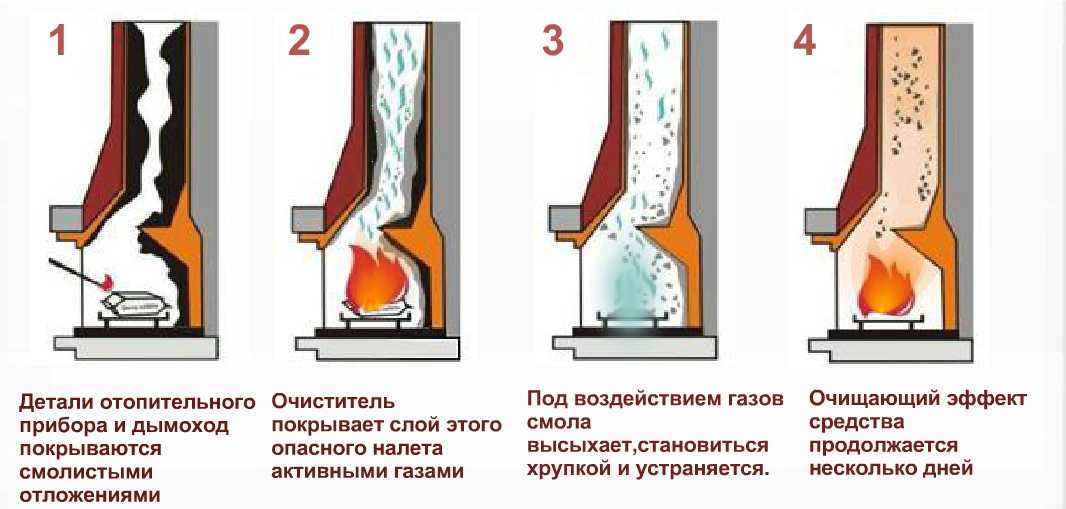
The range of chemicals for cleaning the chimney is constantly updated, but there are drugs that have existed for more than a dozen years. Their impact has already been well studied. Below we will talk about the most popular and common.

The composition of these funds, of course, is not disclosed, the principle of operation is rather poorly described: under the influence of gases emitted during combustion (safe for humans), soot dries out, burns out, becomes brittle and flies out into the pipe or crumbles down. An example of such a log for cleaning the chimney of a German manufacturer in the video.
Thermal chimney cleaning methods
The action of this method is based on the fact that soot is a high-calorie combustible substance. The temperature in the chimney is brought to the point where it flares up and burns out. The problem is that the burning temperature of soot is about 1100°C and few chimneys and fire cuts (when passing through the ceiling or roof) are able to withstand such heating.
Its one very unpleasant and dangerous feature is that if a lot of soot has accumulated, the moment of ignition is very similar to an explosion. Almost the same sound is heard, and the air wave is palpable. So, not weak shock load is added to the extremely high temperatures. There were times when even the coarse stoves fell apart. So this method is a dangerous undertaking.
Thermal cleaning is implemented simply: take dry aspen firewood and heat the stove. Their burning temperature is very high, and after a while the soot flares up. If aspen is heated periodically, the deposits simply do not have time to be deposited in sufficient quantities to cause any tangible harm during combustion. But on a clogged chimney, this method is dangerous to use.
